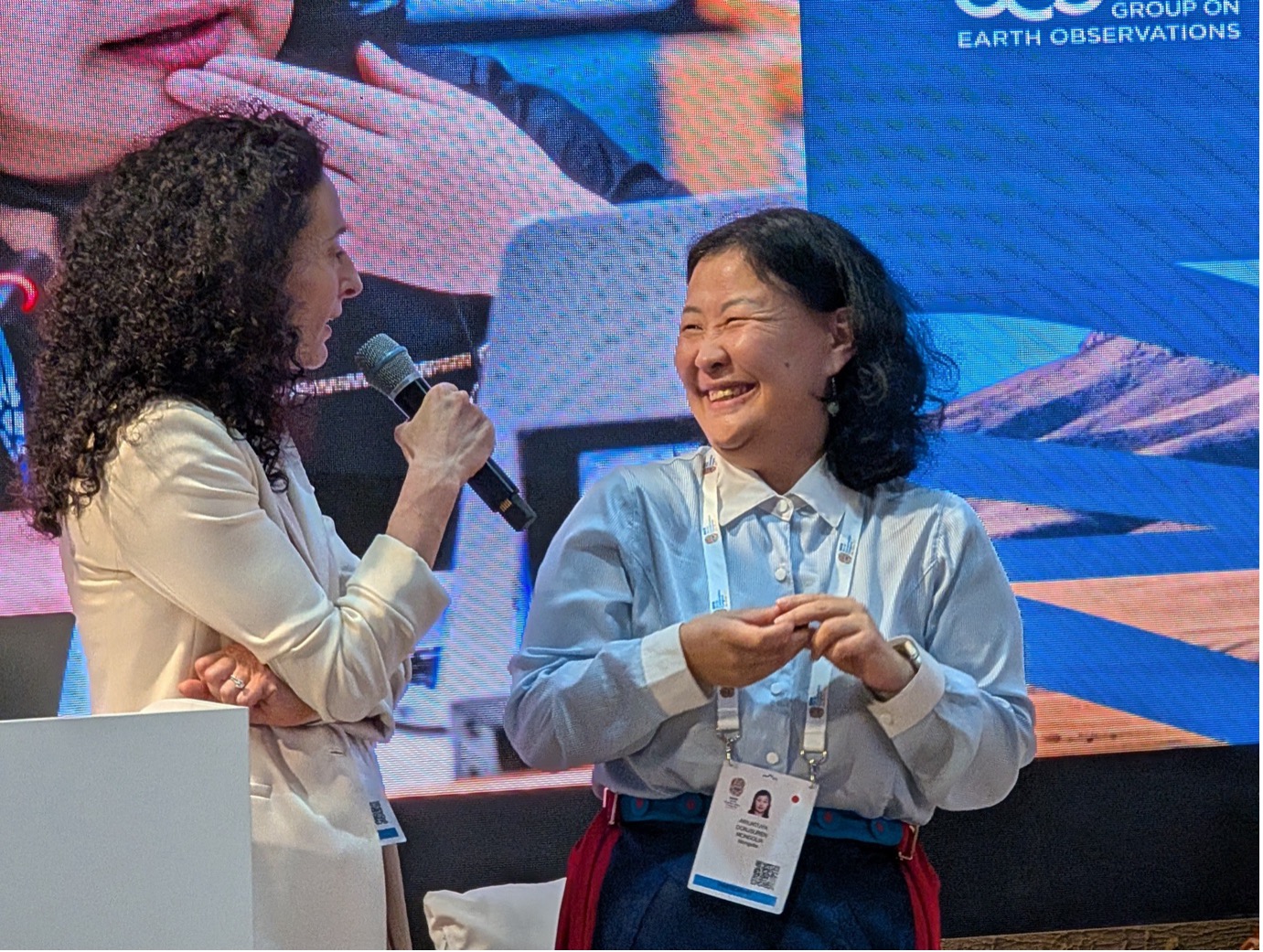Advancing ecosystem intelligence at the world’s biggest conservation congress
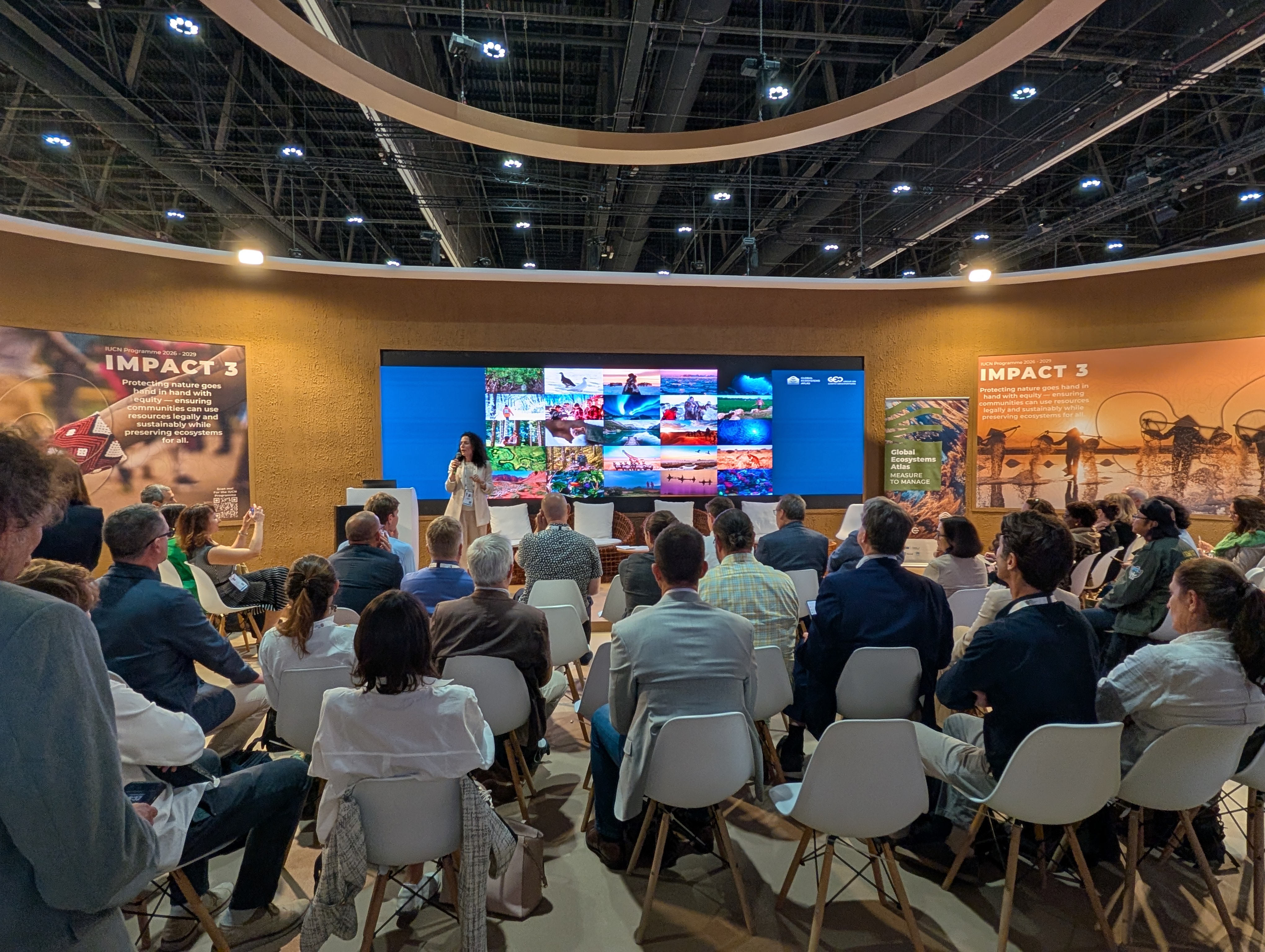
Convener’s note: a collective mission to build the world’s ecosystem knowledge base
IUCN World Conservation Congress (WCC) is the epicentre of conservation action. This year, it brought together not only the traditional conservation community, but also the private sector, policymakers and others who play a vital role in how the world responds to the climate and nature crisis.Places like WCC are where we move beyond diagnosing problems to advancing solutions.One such solution, led by the Group on Earth Observations (GEO), is the Global Ecosystems Atlas, the most comprehensive, standardised resource on the distribution, condition and change of the world’s ecosystems.I was proud to lead our mission to Abu Dhabi to strengthen the relationships that will make the Global Ecosystems Atlas a success.Interest in our work was strong, and we are eager now for communities to collaborate with us to use the tools we're developing with world-leading partners such as AI2, Google and Esri.I left WCC more convinced than ever that the mission and vision of the Global Ecosystems Atlas are both essential and achievable in the fight to halt and reverse biodiversity loss.

WCC highlights for the Global Ecosystems Atlas – at a glance
- Deepened relationships with national environment agencies and ministries, multilateral convention secretariats, conservation NGOs, funders, geospatial and cloud specialists, AI and remote sensing developers, academic labs, and implementation partners.
- Co-hosted a main-stage session with IUCN – “Global Ecosystems Atlas: the innovation layer for nature action using IUCN’s typology” – drawing leaders and experts across policy, science, technology and business.
- Highlighted innovation in a Google-hosted session on AI-enabled ecosystem mapping and monitoring.
- Pursued new commitments by engaging high-profile funders and prospects, confirming appetite to co-develop and resource next steps.
- Spread the word in two IUCN Red List of Ecosystems training sessions, showcasing Atlas mapping capability.
- Engaged countries in productive conversations with representatives from Mongolia, the Philippines, Sri Lanka, India, Indonesia, Brazil and several sub-Saharan African nations.
- Aligned on shared priorities and next steps for the Global Ecosystems Atlas as key technical partners convened post-WCC for a two-day working meeting.
Turning ambition into evidence: the Global Ecosystems Atlas and the 2030 moment
The Global Ecosystems Atlas team went to Abu Dhabi for IUCN World Conservation Congress (WCC) to build commitment to advancing ecosystem intelligence.
During the week, the team heard about the urgent need to turn biodiversity ambition into measurable action as we near 2030, the year of reckoning when humanity must show progress made against every major environmental and development goal, from the Global Biodiversity Framework to the Paris Agreement and the Sustainable Development Goals.
Rising to meet this challenge, the Global Ecosystems Atlas is the evidence base for that 2030 moment: a common map of the world’s ecosystems that reveals where they are, how they are changing, where collective action delivers impact – and where more is needed.
Speaking during a high-level session on the push for those 2030 goals, Astrid Schomaker, Executive Secretary, CBD, referred to the Global Ecosystems Atlas when talking about the importance of ecosystem accounting and the need for countries to use integrated science.

Fragile times call for agile solutions: the need for innovation through collaboration
There were strong messages from the outset at WCC. During the opening plenary, IUCN President Razan Khalifa Al Mubarak said that multilateralism is under strain, paving the way for new forms of cooperation.

Ms Mubarak’s words echoed those of Global Ecosystems Atlas Convener Yana Gevorgyan, who wrote that multilateral institutions “must innovate or die”.
“To avoid becoming obsolete, they must embrace experimentation and controlled risk-taking by establishing accelerators, adopting agile structures, and learning how to fail productively.”
That agile spirit is at the core of the Global Ecosystems Atlas.
Strengthening collaboration, capacity and cross-sector engagement
There was significant interest at WCC in the tools and resources the Global Ecosystems Atlas team and partners are developing.
Potential early adopters from the corporate sector and NGOs told us they are eager to explore how the Global Ecosystems Atlas can support transparency, accountability and action in biodiversity-related commitments.
The team also met scientists and decision-makers central to the Global Ecosystems Atlas’s development and downstream applications, including experts in Key Biodiversity Areas, light pollution and infrastructure development.
And discussions with representatives from UN Conventions highlighted the role the Global Ecosystems Atlas can command as a shared reference point that links data and decision-making across multiple Conventions in support of global biodiversity and ecosystem goals.
Expanding country collaboration to strengthen the Atlas foundation
The Global Ecosystems Atlas team connected with experts and government representatives from across the world, including Mongolia, the Philippines, UAE, India, Indonesia, Sri Lanka, Brazil and several countries in sub-Saharan Africa.
Country representatives showed strong interest in the AI models and mapping tools developed by partners like Ai2, Esri and Google. Discussions also focused on expanding access to ecosystem data resources and identifying national experts to help review and validate ecosystem annotations.
Showcasing the Global Ecosystems Atlas on the global stage: our joint event with IUCN
Our standing-room-only joint event with IUCN, Global Ecosystems Atlas: The Innovation Layer for Nature Action using IUCN’s Typology, had strong participation from across policy, science, technology and corporate sectors.

Among speakers were experts from long-time Global Ecosystems Atlas partners like IUCN, CBD, UN Environment Programme (UNEP) and Nature Positive Initiative; key technology partners Ai2, Esri, Google and the European Space Agency (ESA); and country representatives from Mongolia, the Philippines and WCC host country the United Arab Emirates.
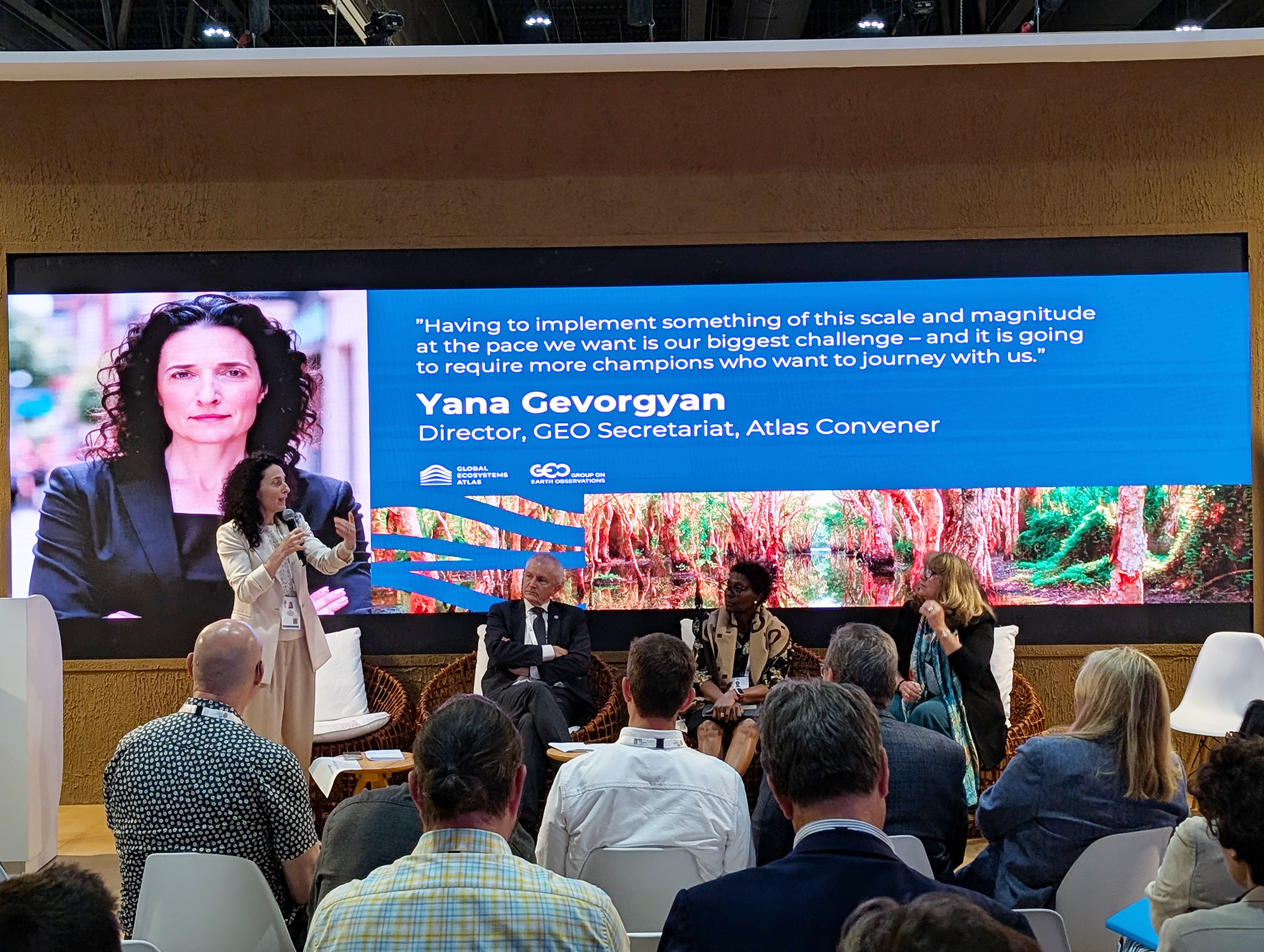
As Elizabeth Mrema, Deputy Executive Director of UNEP, noted, “Data means nothing without action.” The Atlas exists to turn fragmented views into a common lens, helping countries and organisations move from information to implementation.
“Truly this is about democratising ecosystem mapping action,” said Yana Gevorgyan, Convener of the Global Ecosystems Atlas, who moderated the session.
Astrid Schomaker, Executive Secretary of CBD, described the Atlas as “a science-based guide to global behaviour change.”
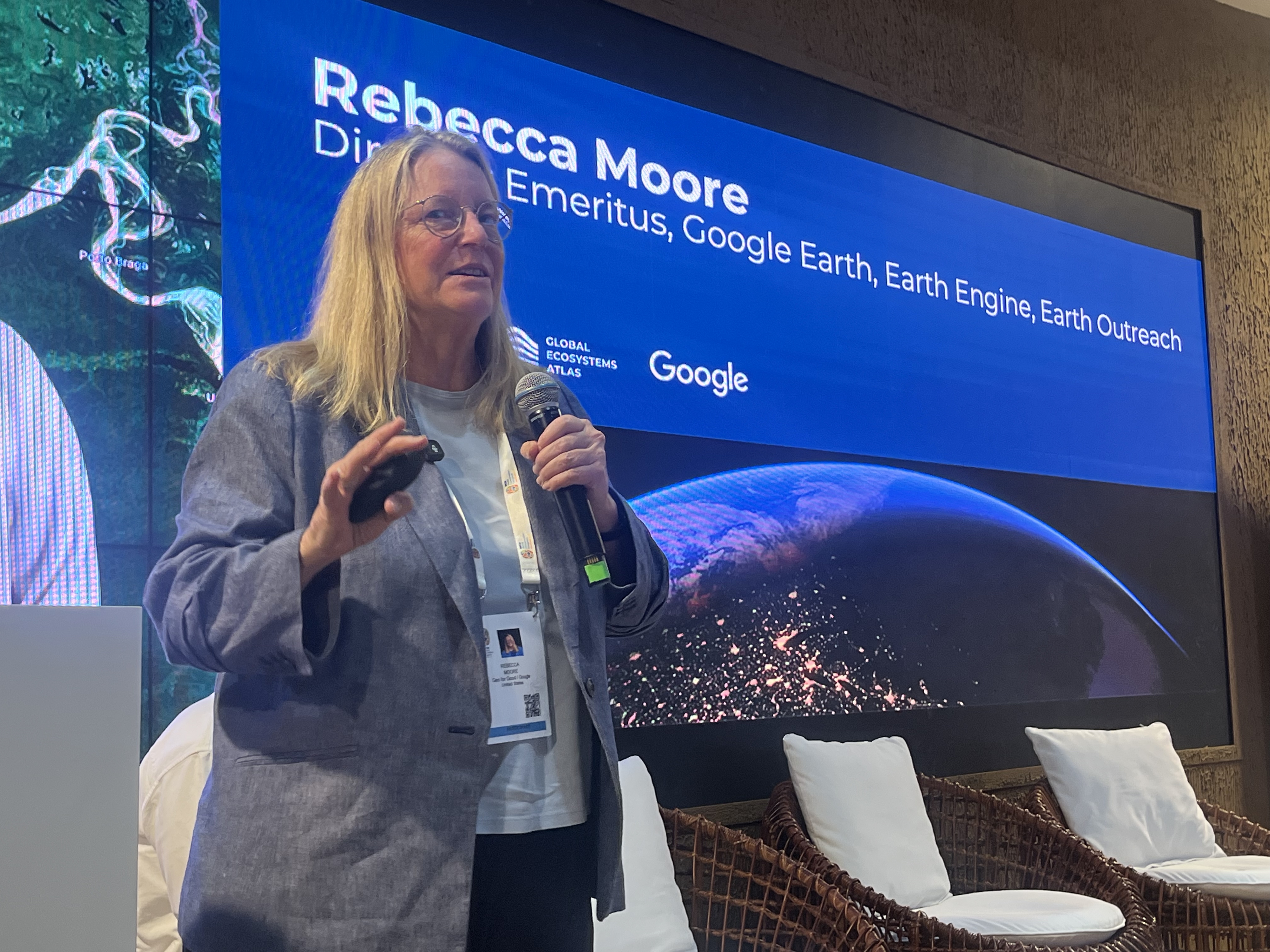
From IUCN, Deputy Director General Stewart Maginnis described the partnership as a model for effective collaboration: “This is a perfect partnership,” he said, noting how the Atlas is co-created with exceptional partners, grounded in science and unified through the IUCN Global Ecosystem Typology.
Marco Lambertini, Convener of the Nature Positive Initiative, emphasised the importance of credible data for the private sector: the Global Ecosystems Atlas is “going to provide answers, data that are credible, and really trigger action and adoption within the private sector.”
Highlighting advances in technology and innovation at Google’s event
Later in the week, in a talk at a Google-hosted event, Nick Murray, Global Ecosystems Atlas Science Lead, took us behind the scenes of the Global Ecosystems Atlas, demonstrating how the first comprehensive map of ecosystem types is being built.
Each colour on the map represents a piece of the Earth we understand, and every area of grey shows where we still have work to do, he said.

To fill those gaps, Nick’s team of “digital explorers” are analysing more than 90,000 data points from around the world, supported by AI-powered tools from partners like Google's AlphaEarth Foundations and Ai2’s OlmoEarth. Together, they’re helping to make ecosystem mapping faster, more accurate and more open than ever before.
Bringing partners together: the first Global Ecosystems Atlas Technical Consortium Meeting
One of the highlights of our time in the UAE came after WCC, as the team travelled to Dubai where Esri hosted the first Global Ecosystems Atlas Technical Consortium Meeting. Representatives from Ai2, Esri, Google, ESA and IUCN came together to align on shared priorities and next steps for the Global Ecosystems Atlas.
The energy in the room reflected the true spirit of the Global Ecosystems Atlas: collaboration across disciplines, technologies and institutions to deliver something that no single organisation could achieve alone (and that many thought was impossible).
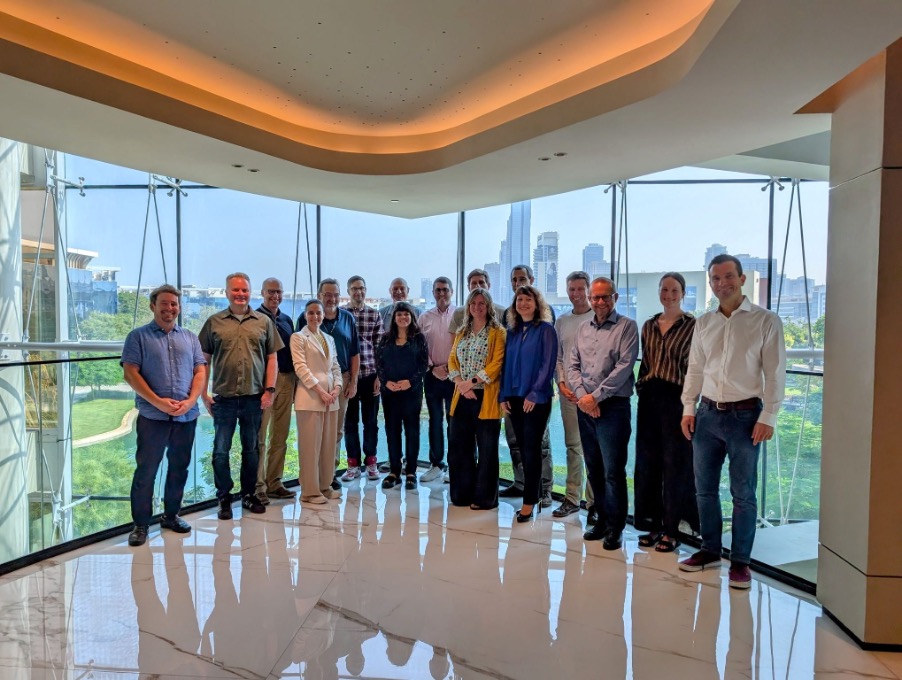
From momentum to implementation: what’s next after WCC
WCC closed with major decisions and signals. Members adopted close to 150 motions spanning biodiversity, climate, health, ecocide and plastic pollution, approved a new 20-year Strategic Vision for the Union, and endorsed the IUCN Programme for 2026–2029.
For the Global Ecosystems Atlas team, the path ahead is clear: turn the growing demand we saw for ecosystem intelligence into action by scaling operations, onboarding early adopters, empowering champions and delivering the world’s most comprehensive map of ecosystems.
